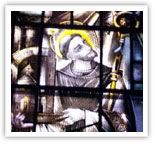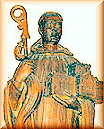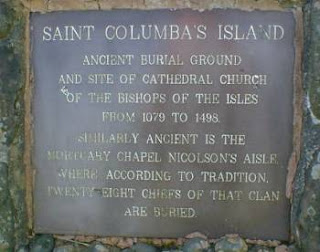----- Forwarded
Message -----
From: Mark . . .
To: Donald . . .
Sent: Sunday, 10 June 2012, 16:25
Subject: Talk on reception of the habit
From: Mark . . .
To: Donald . . .
Sent: Sunday, 10 June 2012, 16:25
Subject: Talk on reception of the habit
After Lauds, the Chapter of the Community was present for ceremony of the habit given to the Novice, Seamus Conway.
The Reception of a Novice is a very practical activity but full of symbolism. On this occasion for the time, the Sacristan was asked to photograph the happy event, as the pictures attached.
The Reception of a Novice is a very practical activity but full of symbolism. On this occasion for the time, the Sacristan was asked to photograph the happy event, as the pictures attached.
Talk on the Reception
of the Habit
Seamus Conway 10 June 2012
Traditionally the abbot uses this talk to remind a postulant on the day he receives the habit what his vocation is about, what he has come to the monastery for. God calls people to the monastic life by various roads but always to the same end. That end is truly to seek God. The means to it are many. The chief of these are prayer and love of the brethren. Unless we remind ourselves of the need to keep God in our sights and to keep walking with him, we will falter on the way.
Our daily reading, our regular attendance at the Divine Office and our openness to the calls on our time at awkward moments – when others have a real need – are also means to keeping God before our eyes. We need to plan our days and to work within the structures of the monastic timetable, but it’s amazing how often we have to drop our own plans because of other circumstances. We can be busy doing God’s work and yet at the end of the day wonder what on earth we have been doing all day. The time has flown and we don’t seem to have done anything constructive. We must not use this experience, which hopefully won’t happen too often, as an excuse for not planning our day. An ordered day does matter. It is pleasant to do the things that we like, but it is better to get on with the things we have to do whether we like them or not. That is the way monasteries came to be built over the years and how holy monks came to be formed.
| and Br. Seamus |
However
these times in our lives can be the very ones that lead us closer to God
because they force us to go to God like the psalmist, and plead for help. We learn quicker our need of God. These times are also moments when we can get
a better awareness if we really do have a call to the monastic life.
Our
fellow monks are there to help us on way to God. We should not let any quirks or peculiar
personal oddities they may have to throw us off course. St John of the Cross, I think it was, said
that if we want to have love in our lives, we should put love into life and
then we will find it.
That,
Seamus, is what you have before you. You
came to us with your own particular gifts and you will add to them by receiving
the gifts that the other members of the community themselves possess. Fullness of life comes from giving and
receiving what we all have to share.
These
are only some of the things that have drawn you to the monastic life. Our vocation is to seek and find God, to hold
fast to him in good times and bad. That
is the way offered to you. After your
experience over a number of months in this community, it is time for you now to
decide if you wish to continue living with us as you continue to seek God’s
will in your life.
Community Mass of Corpus Christi
Intro
Mass Body and Blood of Christ, year B 2012
Today is the solemnity
of Corpus Christi, the Body and Blood of Christ. It is also the beginning of the International
Eucharistic Congress in Dublin, which continues for the whole week.
The purpose of the
Congress, as it is of today’s solemnity, is to celebrate and understand more
fully the legacy left us by our Lord of his body and blood in the bread and
wine of the altar. He imparts to us his
risen life. That is what we
receive and celebrate. It is not his
physical, earthly, body and blood as he was then but as he became and is for us
now in his risen life. This new life is
forever a new beginning for us as we try to rise above our faults and sins.
1
Lord Jesus, you raise us to new life. - Lord, have mercy.
2
You forgive and free us from our sins - Christ, have mercy.
3
You reconcile us to one another in your
own body.
- Lord, have mercy.
- Lord, have mercy.
Prayer
of the Faithful
Intro. As one body, let us prayer to our Father
who gives life to the world..
who gives life to the world..
Concl. God our Father, may the gift of food we eat
at this table make us strong, and may all of your gifts fill our lives as we
seek your kingdom in heaven.
We ask this through Christ our Lord.
We ask this through Christ our Lord.






















